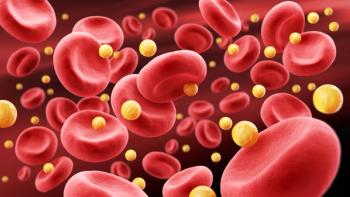
Recombinant Human Hyaluronidase-Facilitated SCIg Sustains Clinical Remission in Idiopathic Inflammatory Myositis
Key Takeaways
- Hf-SCIg effectively induced and maintained remission in IIM patients over 24 months, improving muscle and esophageal symptoms.
- The treatment showed a corticosteroid-sparing effect, reducing the burden of sustained corticosteroid use in IIM management.
Subcutaneous immunoglobulin (SCIg) is a hopeful alternative to intravenous immunoglobulin in patients with inflammatory myositis due to a lack of adverse effects and fewer financial constraints.
Recombinant human hyaluronidase-facilitated subcutaneous immunoglobulin (hf-SCIg) was safe and effective at inducing and maintaining clinical remission for up to 24 months in patients with idiopathic inflammatory myositis (IIM), according to the results of a trial published by investigators in the European Journal of Internal Medicine.1
Nature of IIM Necessitates Novel Approaches
IIM is one of many heterogeneous diseases that share a chronic inflammation of skeletal muscle, with frequent presentations of proximal muscle weakness. Severe forms of the condition can induce systemic organ involvement, often impact the joints, skin, lungs, esophagus, and heart, and contribute to increased mortality and morbidity. The complicated nature of this spectrum of diseases necessitates proper education of health care providers on conventional management strategies.2
Standard treatments for IIM are typically based on glucocorticoids and immunosuppressants, most prominently traditional disease-modifying anti-rheumatic drugs (DMARDs) and biologics, either alone or in combination with DMARDs. Intravenous immunoglobulin (IVIG), either alone or in combination with glucocorticoids, has emerged as a novel, effective option for patients with IIM, with clinical trials finding positive efficacy and safety indications.3
Despite the promising nature of IVIG in IIM, obstacles surround the treatment. IVIG can be associated with several mild or rare, serious adverse effects, and the financial burden associated with treatment often makes long-term use riddled with limitations. Additionally, the need for intravenous infusion and in-hospital administration can negatively impact patient quality of life. Accordingly, SCIg has emerged as a hopeful alternative, with a reduced financial burden and improved safety profile. Hf-SCIg is particularly intriguing, as it allows for the increased permeability of subcutaneous tissue and the infusion of larger volumes of Ig.4
Retrospective Trial Finds Reduced Remission With Hf-SCIG at 24 Months
The investigators, bolstered by the positive indications of Hf-SCIg’s efficacy in this population, initiated the current multicenter trial, evaluating the safety and effectiveness of recombinant human Hf-SCIg in patients with IIM who were admitted to various tertiary centers in Italy. The multicenter, retrospective, cohort study included a total of 26 patients; of these, 5 received hf-SCIg for remission induction and 21 received the treatment based on remission maintenance, according to the study authors.1
Hf-SCIg therapy was introduced following a median time of 2.2 years after diagnosis of IIM, with a median monthly dosage of about 1.7 g per kg. The main reported reason for introducing hf-SCIg was muscle involvement (n = 14; 54%), followed by upper esophageal involvement (n = 11; 42%). Typically, hf-SCIg was utilized in combination with corticosteroids (n = 21; 81%). Investigators evaluated patient data at 3, 6, 12, and 24 months.1
Among the 5 patients treated for remission induction, there was a trend towards improvement in Medical Research Council (MRC) score, from 42 at baseline to 48 at 6 months. For the 21 patients treated for remission maintenance, the effectiveness of hf-SCIg was assessed over 24 months of follow-up. Similarly, there was a favorable trend towards an increase in MRC score after 3, 6, and 12 months of treatment compared with baseline. In an important observation, clinical manifestations of IIM improved throughout the observational period, namely esophageal and constitutional symptoms.1
SCIg Is Hopeful Alternative to IVIG in IIM
Based on their data, the investigators deemed hf-SCIg a feasible, beneficial, and safe treatment option in patients with IIM for both remission and induction. In their discussion, they noted that short-term use of hf-SCIg treatment for remission induction had a corticosteroid-sparing effect without worsening patient manifestation or MRC score, an important development given the burden that sustained corticosteroid use can have on patients.1
Given the use of IVIG in this population, it is a positive development that the long-term clinical benefits of hf-SCIg are maintained in patients previously treated with intravenous administration. However, the authors noted in their discussion that limitations are present, including the nature of its observational, retrospective design and the lack of a control group, which prevents the possibility of controlling for spontaneous variations in disease activity.1
“Despite these limitations, our study has the strength of having included an unselected sample of IIM patients, widely representative of the Italian clinical care, providing for the first time clinically meaningful data on hf-SCIg used for remission induction and maintenance in this setting,” the study authors wrote in their conclusion.1
REFERENCES
1. Palermo A, Biancalana E, Bettiol A, et al. Recombinant human hyaluronidase-facilitated subcutaneous immunoglobulin (hf-SCIg) for inflammatory myositis: A multicenter retrospective real-world observational study. Euro Journ Intern Med. 2025. doi:0.1016/j.ejim.2025.05.016
2. Lundberg IE, Visser M, Werth VP. Classification of myositis. Nature Reviews Rheumatology. 2018;14:269-278. doi:10.1038/nrrheum.2018.41
3. Dalakas MC, Illa I, Dambrosia JM, et al. A controlled trial of high-dose intravenous immune globulin infusions as treatment for dermatomyositis. N Engl J Med. 1993;329(27):1993-2000. doi:10.1056/NEJM199312303292704
4. Gandiga PC, Ghetie D, Anderson E, et al. Intravenous immunoglobulin in idiopathic inflammatory myopathies: A practical guide for clinical use. Curr Rheumatol Rep. 2023;25:152-168. doi: 10.1007/s11926-023-01105-w
Newsletter
Stay informed on drug updates, treatment guidelines, and pharmacy practice trends—subscribe to Pharmacy Times for weekly clinical insights.


















































































































































































































